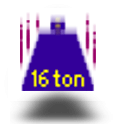
Python is a programming language. MacPython is a package containing that programming language plus Mac-specific tools and extensions.

|
Python is a programming language. MacPython is a package containing that programming language plus Mac-specific tools and extensions.
|
The Python programming language is available for many hardware platforms, and most general documentation is Unix- or Windows-centered. Keep this in mind when reading the rest of this help, or information on the web.
The Python website, www.python.org, has a Beginners Guide section including an executive summary on the language and a comparison of Python to other languages. Or read the (rather longwinded) Python Tutorial in the Python Language and runtime documentation.
MacPython contains a complete unix interpreter so if you are familiar with Python on unix you should feel right at home.
The MacPython Integrated Development Environment (IDE) allows easy editing, running and debugging of scripts. Read the Introduction to the IDE to whet your appetite.
MacPython comes with lots of modules that allow access to MacOS-specific technology, such as Carbon, Quicktime and AppleScript. See the Macintosh Modules section of the Python Language and runtime documentation, but please keep in mind that some information there still pertains to Mac OS 9. Full access to the Cocoa APIs and tools such as Interface Builder is available separately through the Package Manager.
The Package Manager also gives you access to extension packages for cross-platform GUI development (Tkinter, wxPython, PyOpenGL), image processing (PIL), scientific computing (Numeric) and much more. PyObjC deserves a special mention: it allows transparent access to Cocoa and Interface Builder, similar to what Java provides, thereby making Python a first class citizen in the Mac OS X developer world.
Python scripts can be saved as applets, semi-standalone applications that work just like a normal application. Additionally you can even create true standalone application that have everything embedded and can be shipped to anyone, without the need to install Python. You do not need to install the Apple Developer Tools for this.